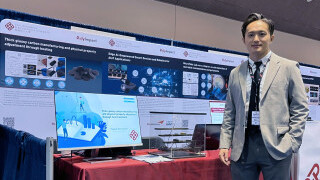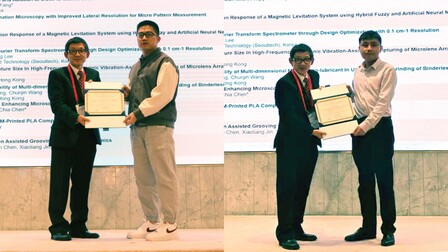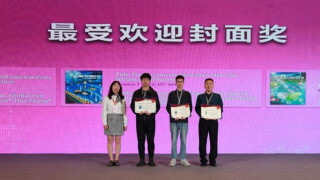Advancements in Ferroelectric Untwisted Heterobilayers: A Novel Approach
Other Articles

Unveiling the potential of untwisted, commensurate, and epitaxial molybdenum disulfide and tungsten disulfide (MoS2/WS2) heterobilayers for enhanced ferroelectric and piezoelectric applications.
Study conducted by Prof. Daniel Shu Ping LAUand his research team
Ferroelectric materials, known for their intrinsic electrical polarisation, are crucial in advancing non-volatile memory and in-memory computing devicesNote1. Their ability to maintain polarisation states without power enhances data retention and energy efficiency. Recent developments in two-dimensional (2D) ferroelectric materials offer promising avenues for miniaturisation and improved performance. These 2D materials with atomic-scale thickness exhibit electronic, optical, mechanical, and thermal properties that are not found in their bulk counterparts, potentially transforming computing architectures by enabling faster data processing and reduced energy consumption.
Out-of-plane (OOP)Note2 piezoelectricity in 2D materials has been reported in few-layered In2Se3 and through the introduction of chalcogen vacancies in MoTe2. Theoretical studies have explored a range of 2D ferroelectric materials, including MXenes, group IV monosulfur compounds, III2–VI3 compounds, transition metal dichalcogenide (TMDC) alloys, and transition metal phosphochalcogenides [1]. Recently, ferroelectricity has been observed in twisted layers of hexagonal boron nitride and TMDCs. Ferro- and piezoelectricity have also been detected in rhombohedral homobilayer TMDCs. However, this process is complex and requires precise control over the twisting angle and layer alignment, sophisticated fabrication techniques, and measures to avoid an interaction effect on interfaces for optimising ferroelectric properties.
As reported in a study published in Science, a research team led by Prof. Daniel Shu Ping LAU, Chair Professor of Nanomaterials and Head of the Department of Applied Physics at The Hong Kong Polytechnic University, has developed a simple one-step chemical vapour deposition (CVD) process to synthesise an untwisted, commensurate, and epitaxial heterobilayer structure composed of molybdenum disulfide and tungsten disulfide (MoS2/WS2) on SiO2 substrates [2]. This structure exhibits unexpected OOP ferroelectric and piezoelectric properties. Unlike traditional methods of synthesis that rely on twisted bilayer materials to achieve ferroelectricity, this study presents a novel approach that opens new avenues for applications in two-dimensional materials.
Figure 1 presents the schematic setup for the one-step CVD growth of the MoS2/WS2 heterobilayers on SiO2. In brief, CVD is a widely-used process in materials science for producing thin films and coatings. It involves the chemical reaction of gaseous precursors on a substrate surface, resulting in the deposition of a solid material. In this study, the process takes place in a furnace with a controlled environment, where the SiO2/Si substrate reacts with precursors, including tungsten trioxide (WO3) powder, molybdenum trioxide (MoO3) powder, and sulfur (S) powder, to form the heterobilayers. KI salt grains are used as a catalyst to facilitate the growth process.
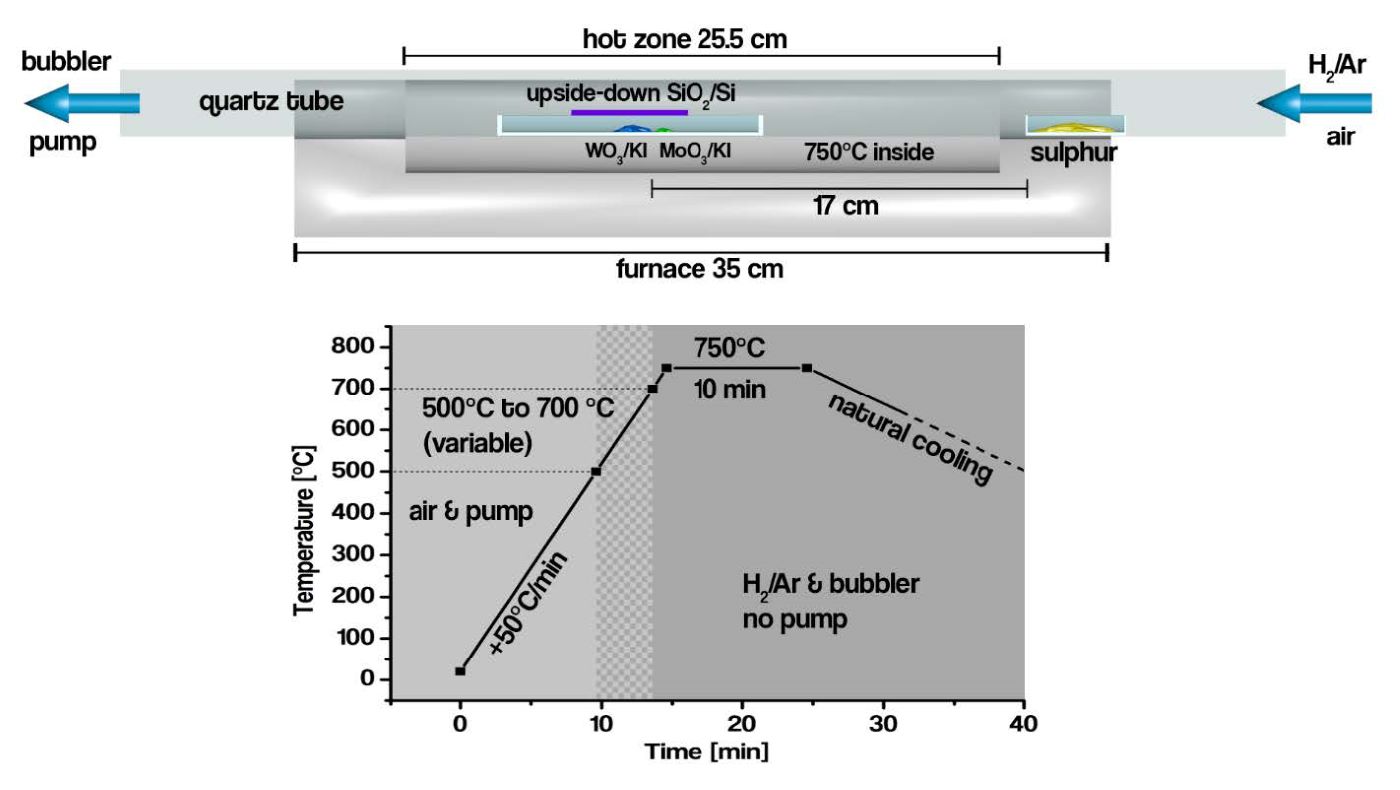
Figure 1. Schematic of setup and growth temperature overview for one-step CVD growth of the MoS2/WS2 heterobilayers on SiO2.
The top schematic shows the arrangement of powders, quartz boats and the substrate for the CVD process, as well as the physical dimensions of the furnace. The graph shows the temperature development in the tube center over time. In the heating phase of the process, the gas in the tube is switched from pumped air (marked in light grey) to H2/Ar gas mix (dark grey).
The research team employed piezoelectric force microscopy (PFM) to confirm the excellent piezoelectric properties of the MoS2/WS2 heterobilayer. The results demonstrated that both stacking configurations of the MoS2/WS2 heterobilayer—3R-like rhombohedral symmetry and 2H-like hexagonal symmetry (Figure 2)—exhibited significant OOP piezoelectricity, with OOP piezoelectric coefficients (d33) of 1.95 pm/V and 2.09 pm/V, respectively. These values are approximately six times greater than the OOP piezoelectric coefficient of monolayer In2Se3 (~0.34 pm/V).
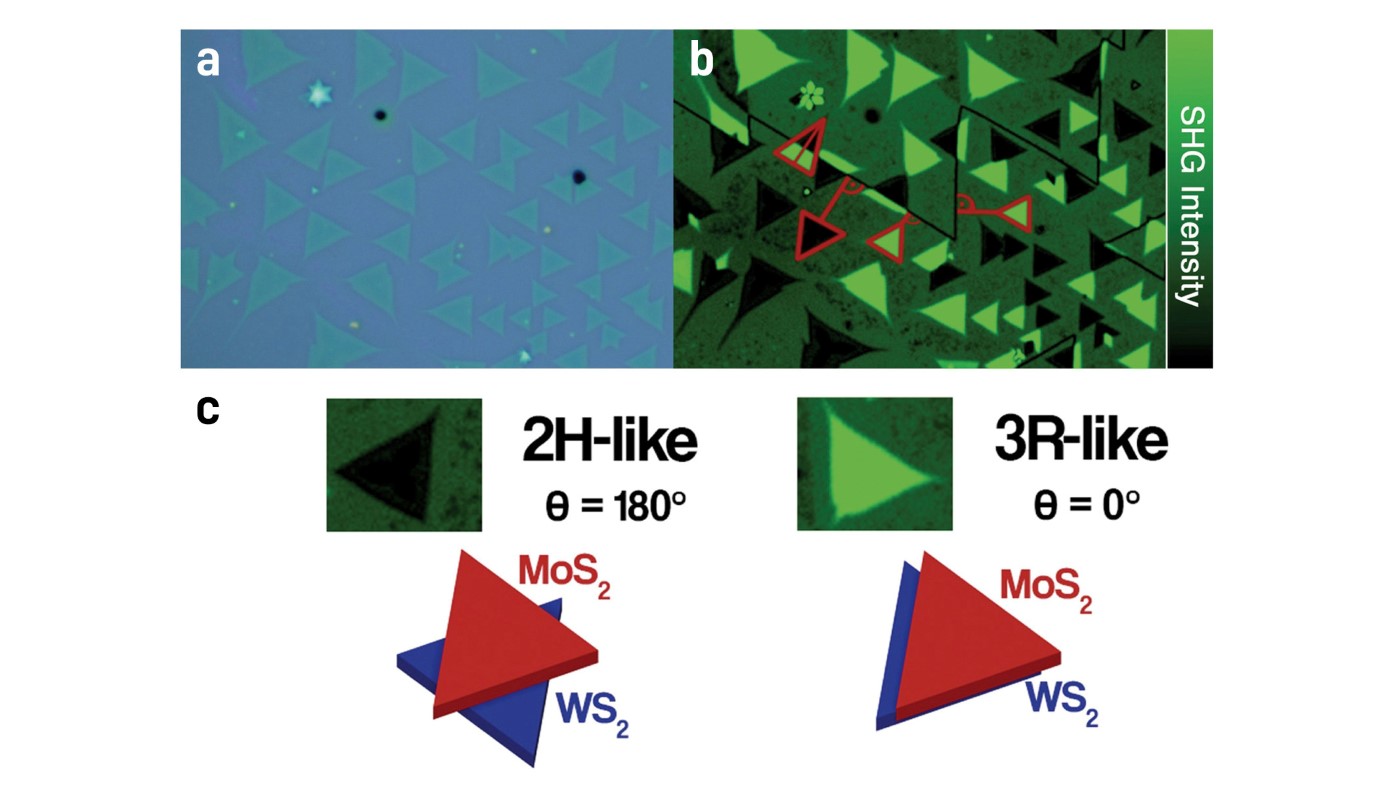
Figure 2. CVD-grown MoS2/WS2 heterobilayers.
a) Optical microscopy image of MoS2/WS2 triangles across a large MoS2 cluster. b) The corresponding unfiltered second harmonic generation (SHG) intensity map. The MoS2/WS2 triangles appear either very bright or very dark across the map. The black lines are single-crystal domain boundaries of the large MoS2 monolayer. Bright triangles always point toward the nearest domain boundaries; dark triangles point away from them, as indicated by the red lines. c) Relationship between SHG intensity and vertical stacking angle θ. Dark triangles are labelled 2H-like and bright triangles 3R-like.
The ferroelectricity property of the MoS2/WS2 heterobilayer is confirmed by applying the DART-SS-PFM (Dual AC Resonance Tracking - Switching Spectroscopy Piezoresponse Force Microscopy) hysteresis method and domain wall-writing experiments [3]. Building on this, the research team fabricated ferroelectric tunnel junction devices and investigated their electrical transport characteristics. Experimental results indicated that, by altering the polarisation state of the MoS2/WS2 heterobilayer, the tunnel current could be effectively modulated, with a high resistance state to low resistance state resistance ratio reaching as high as 102 to 103. The results are consistent with density functional theory, which reveals that both symmetry breaking and interlayer sliding give rise to unexpected properties, without the need to invoke twist angles or moiré domainsNote3.
This research provides new insights for the design and fabrication of novel ferroelectric devices based on untwisted commensurate bilayers consisting of two-dimensional monolayers of MoS2 and WS2. Unlike previous methods that relied on twisted bilayer structures to achieve ferroelectricity through moiré superlattices, this study demonstrates that ferroelectric heterobilayers can be obtained directly through a one-step CVD method, offering greater controllability and scalability for future applications.
Building on the breakthrough results of this study, Prof. Lau’s research team is currently developing a simulation model using CVD to accelerate the screening of a library of promising polarised van der Waals heterobilayers. This effort aims to enhance the scale and performance of 2D ferroelectrics and provide insights for developing high-density, energy-efficient next-generation non-volatile memory and in-memory computing devices. This new project has received support from the National Natural Science Foundation of China (NSFC) and the Research Grants Council (RGC) of the Hong Kong Special Administrative Region via the NSFC/RGC Collaborative Research Scheme 2024/25 (Grant CRS_PolyU501/24), with completion expected by 2028.
The research is supported by The Hong Kong Polytechnic University (Grant 1-ZVGH), the Research Grants Council of Hong Kong (Grants 15306321, C5029-18E, AoE/P-701/20), the National Key R&D Program of China (Grant 2018YFE0202700), the National Natural Science Foundation of China (Grants 11622437, 11804247, 61674171, and 11974422), the Fundamental Research Funds for the Central Universities of China and the Research Funds of Renmin University of China (Grant 22XNKJ30), and the Strategic Priority Research Program of the Chinese Academy of Sciences (Grant XDB30000000). The project has also received funding from the European Research Council (ERC) under the European Union’s Horizon 2020 research and innovation programme (Grant agreement GA 101019828-2DLOTTO]), the Leverhulme Trust (Grant RPG-2019-227), EPSRC (Grant EP/T026200/1, EP/T001038/1), and the Royal Society Wolfson Merit Award (Grant WRM\FT\180009).
The data source is available at: https://www.science.org/doi/suppl/10.1126/science.abm5734/suppl_file/science.abm5734_sm.pdf.
Prof. Lau was named as a "Highly Cited Researcher" by Clarivate Analytics for the year 2023. He was ranked among the top 2% most-cited scientists worldwide (for career-long) by Stanford University in the field of applied physics for five consecutive years from 2020 to 2024. Prof. Lau is currently the Director of the University Research Facility in Materials Characterization and Device Fabrication, as well as the Associate Director of Photonic Research Institute of The Hong Kong Polytechnic University. His current research focuses on nanomaterials and energy materials, particularly the synthesis of 2D materials for optoelectronic, electrocatalysis, and energy storage applications.
| Notes |
|---|
These materials possess a spontaneous electric polarisation that can be reversed by the application of an external electric field, making them ideal for data storage applications.
The electric polarisation vector is perpendicular to the plane of the material.
Moiré patterns can emerge when two ferroelectric layers with slightly different lattice constants or orientations are stacked on top of each other.
| References |
|---|
[1] Ding, W., Lu, J., Tang, X., Kou, L., & Liu, L. (2023). Ferroelectric Materials and Their Applications in Activation of Small Molecules. ACS Omega, 8(7), 6164–6174. https://doi.org/10.1021/acsomega.2c06828
[2] Rogée, L., Wang, L., Zhang, Y., Cai, S., Wang, P., Chhowalla, M., Ji, W., & Lau, S. P. (2022). Ferroelectricity in untwisted heterobilayers of transition metal dichalcogenides. Science, 376(6596), 973–978. https://doi.org/10.1126/science.abm5734
[3] Kalinin, S. V., & Gruverman, A. (Alexei). (2011). Scanning probe microscopy of functional materials nanoscale imaging and spectroscopy. Springer.
 | Prof. Daniel Shu Ping LAU Associate Director of Photonics Research Institute |


